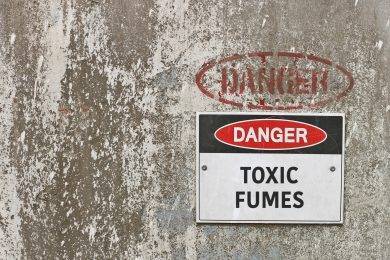Many jobs have a higher capacity for danger than others. Many of these jobs provide important services and resources. Disruptions that halt the work they do mean production and resources stop.
Employees that work in these fields should know how to keep themselves safe. Every workplace that handles hazardous chemicals should have protocols to help prevent accidents.
Guidelines should, at minimum, address two factors. The first is how to store chemicals, and the second is handling them while in use. These two guidelines should help prevent spills and injuries.
Here are some things to help keep everyone safe.
How to Store Hazardous Chemicals
Proper chemical storage starts before storage begins. The first thing to do is identify the dangers of the chemicals your job uses. Hazardous chemicals should come with a safety data sheet that provides pertinent information about the chemicals.
Safety data sheets should identify the physical, chemical, and hazardous properties of the chemicals.
Not all chemicals are the same, which is why familiarizing yourself with their properties is important. Different chemicals pose different hazards from their counterparts. The kind of hazards they pose will require different methods of storage.
Next, identify the risks that accompany using these chemicals. Risk assessment is an important step in forming an action plan. By determining the likelihood and severity of potential incidents, you can determine their impact on your workplace.
If your job necessitates the use of dangerous chemicals, use these factors to determine the best way to store them when not in use. The danger level in the chemicals may require you to use different methods for storage. For example, you can store flammable chemicals in a fire safety cabinet.
You can find service here if you need products to store chemicals at your worksite.
Handling Dangerous Chemicals
During the times that you need to handle hazardous materials, you should be wearing clothing and gear to protect your skin.
Overalls cover the entire front of your body. Overalls made for factory workers are usually made out of materials that are chemical and water resistant.
Aprons are also a good idea to provide an additional layer of protection. Some aprons have a lining that blocks radiation in them as well, like x-rays.
Ballistic suits are for unstable, explosive chemicals. The suits are made from Kevlar and layers of ceramic.
Steel-toed boots will protect feet with their thick material. Thick gloves made out of rubber or Kevlar will protect the hands. For the face, workers should wear face shields and/or goggles.
Protect Yourself and Your Workplace
When handling hazardous chemicals, protocols are necessary to keep everyone safe. Evaluate the contents of the chemicals you use and store them appropriately. When handling chemicals, always be sure to dress in a way that affords you the best protection possible.
If you’d like to read other articles like these, we invite you to check out the rest of our blog. We have tons of resources for many different topics. If you like what you see or want to read more about workplace hazards, subscribe to our site to always have quick access to our resources.











